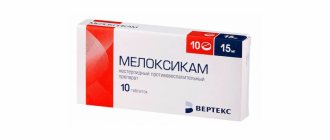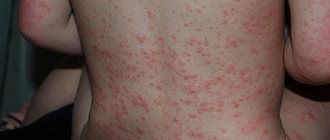Atropine, 5 pcs., 1 ml, 1 mg/ml, solution for injection
Hypersensitivity to atropine.
Use for liver dysfunction. Use with caution in case of liver failure (decreased metabolism).
Use for renal dysfunction. Use with caution in case of renal failure (risk of side effects due to decreased excretion).
Use in elderly patients. Use with caution in patients with diseases of the cardiovascular system, in which an increase in heart rate may be undesirable; with intestinal atony in elderly or debilitated patients (possible development of obstruction), with prostatic hypertrophy without urinary tract obstruction, urinary retention or predisposition to it, or diseases accompanied by urinary tract obstruction (including bladder neck due to prostatic hypertrophy glands).
Use with caution in patients with diseases of the cardiovascular system, in which an increase in heart rate may be undesirable: atrial fibrillation, tachycardia, chronic heart failure, coronary artery disease, mitral stenosis, arterial hypertension, acute bleeding; with thyrotoxicosis (possible increased tachycardia); at elevated temperatures (may further increase due to suppression of the activity of the sweat glands); with reflux esophagitis, hiatal hernia, combined with reflux esophagitis (decreased motility of the esophagus and stomach and relaxation of the lower esophageal sphincter can slow down gastric emptying and increase gastroesophageal reflux through the sphincter with impaired function); for gastrointestinal diseases accompanied by obstruction - achalasia of the esophagus, pyloric stenosis (possibly decreased motility and tone, leading to obstruction and retention of gastric contents), intestinal atony in elderly or debilitated patients (possible development of obstruction), paralytic ileus; with an increase in intraocular pressure - closed-angle (mydriatic effect, leading to an increase in intraocular pressure, can cause an acute attack) and open-angle glaucoma (mydriatic effect can cause a slight increase in intraocular pressure; adjustment of therapy may be required); with nonspecific ulcerative colitis (high doses can inhibit intestinal motility, increasing the likelihood of paralytic intestinal obstruction, in addition, the manifestation or exacerbation of such a severe complication as toxic megacolon is possible); with dry mouth (long-term use may cause further increase in the severity of xerostomia); with liver failure (decreased metabolism) and renal failure (risk of side effects due to decreased excretion); for chronic lung diseases, especially in young children and weakened patients (a decrease in bronchial secretion can lead to thickening of secretions and the formation of plugs in the bronchi); with myasthenia gravis (the condition may worsen due to inhibition of the action of acetylcholine); prostatic hypertrophy without urinary tract obstruction, urinary retention or predisposition to it, or diseases accompanied by urinary tract obstruction (including bladder neck due to prostatic hypertrophy); with gestosis (possibly increased arterial hypertension); brain damage in children, cerebral palsy, Down's disease (reaction to anticholinergic drugs increases).
Atropine sulfate tablets 0.0005 g
Release form: tablets (blister packs) 0.5 mg
Pharmacological group - m-anticholinergic
pharmachologic effect
- bronchodilator
- antiarrhythmic
- m-anticholinergic
- antiulcer
- antispasmodic
Ingredients - atropine 0.5 mg
Indications
- Gastrojejunal ulcer
- Pain in the abdomen and pelvis
- Pain localized in the upper abdomen
- Pain associated with urination
- Diseases of the eye and its adnexa
- Diseases of the vocal folds and larynx, not elsewhere classified
- Diseases of the gallbladder, biliary tract and pancreas
- Salivary gland disease
- Painful urination, unspecified
- Anomalies of pupillary function
- Asthma
- Asthma, unspecified
- Asthma with a predominance of an allergic component
- Secondary parkinsonism
- Bile duct stones without cholangitis or cholecystitis
- Bile duct stones with cholangitis
- Bile duct stones with cholecystitis
- Iridocyclitis
- Cholinesterase inhibitors
- Keratitis
- Keratoconjunctivitis
- Accommodation disorders
- Refractive and accommodation disorders
- Disorders of the secretion of the salivary glands
- Second degree atrioventricular block
- Complete atrioventricular block
- First degree atrioventricular block
- Atrioventricular (atrioventricular) block and left bundle branch block (His)
- Retinal vascular occlusions
- Pylorospasm, not elsewhere classified
- Renal colic, unspecified
- Acute bronchiolitis
- Acute pancreatitis
- Acute cholecystitis
- Poisoning by drugs, medications and biological substances
- Poisoning with drugs acting primarily on the autonomic nervous system
- Non-allergic asthma
- Peptic ulcer of unspecified localization
- Symptoms and signs related to the urinary system
- Symptoms and signs related to the digestive system and abdominal cavity
- Spasm of the larynx
- Mixed asthma
- Trauma to the eye and orbit
- Injuries, poisoning and some other consequences of external causes
- Chronic pancreatitis of alcoholic etiology
- Chronic cholecystitis
- Chorioretinal inflammation
- Chorioretinal inflammation, unspecified
- Cholecystitis
- Cholecystitis, unspecified
- Other and unspecified atrioventricular block
- Other parasympathomimetic (cholinergic) drugs
- Other diseases of the eye and its adnexa
- Other diseases of the pancreas
- Other diseases of the stomach and duodenum
- Other retinal arterial occlusions
- Other and unspecified abdominal pain
- Other superficial keratitis without conjunctivitis
- Other chronic pancreatitis
- Other forms of cholelithiasis
- Other forms of cholecystitis
- Cholelithiasis
- Corneal ulcer
- Duodenal ulcer
- Stomach ulcer
Composition by components
- atropine
Description
White crystalline or granular powder, soluble in water and alcohol.
Pharmacodynamics
An alkaloid contained in plants of the nightshade family, a blocker of m-cholinergic receptors. Prevents the stimulating effect of acetylcholine, reduces the secretion of the salivary, gastric, bronchial, lacrimal, sweat glands, and pancreas. Reduces the tone of the muscles of the gastrointestinal tract, bile ducts and gallbladder; causes tachycardia, improves AV conduction. After intravenous administration, the maximum effect appears after 2-4 minutes, after oral administration (in the form of drops) after 30 minutes. Stimulates the cerebral cortex (in high doses). Dilates the pupils, impedes the outflow of intraocular fluid, increases intraocular pressure, and causes paralysis of accommodation. The pupil dilated with atropine does not constrict when instilled with cholinomimetic drugs. Maximum pupil dilation occurs after 30-40 minutes and disappears after 7-10 days.
Pharmacokinetics
Communication with plasma proteins - 18%. Passes through the BBB. Excreted by the kidneys (50% unchanged).
Application
Peptic ulcer of the stomach and duodenum, pylorospasm, cholelithiasis, cholecystitis, acute pancreatitis, hypersalivation (parkinsonism, poisoning with heavy metal salts), spasms of the intestines and urinary tract, hepatic and renal colic, bronchial asthma, to prevent broncho- and laryngospasm, AV blockade , poisoning with m-cholinomimetics (fly agaric), anticholinesterase drugs, premedication before surgery. Locally (in ophthalmology): to examine the fundus of the eye, to dilate the pupil and achieve accommodation paralysis in order to determine the true refraction of the eye; for the treatment of iritis, iridocyclitis, choroiditis, keratitis, embolism and spasms of the central retinal artery and some eye injuries.
Dosage regimen
SC, IM or IV 0.25-1 mg 1-2 times a day. In ophthalmology: instill 1-2 drops of a 1% solution (in children a solution of a lower concentration is used) into the affected eye, frequency of application - up to 3 times with an interval of 5-6 hours. In some cases, a 0.1% solution is administered subconjunctivally 0.2-0.5 ml or parabulbar - 0.3-0.5 ml. Using electrophoresis, a 0.5% solution is administered through the eyelids or an eye bath.
Side effects
Dry mouth, mydriasis, intestinal atony, dizziness, tachycardia, difficulty urinating, hyperemia of the skin of the eyelids, photophobia, swelling of the conjunctiva of the eyelids and eyeball. Xerostomia, mydriasis, paralysis of accommodation, tachycardia, intestinal atony, bladder atony, headache, dizziness, loss of touch.
Contraindications
Hypersensitivity, angle-closure glaucoma, urinary disorders in prostate adenoma.
special instructions
When instilling the solution into the eye, it is necessary to press the lower lacrimal punctum to avoid the solution entering the nasopharynx. With subconjunctival or parabulbar administration, it is advisable to prescribe validol to reduce tachycardia.
Atropine – solution, tablets
Hypersensitivity. Caution. Diseases of the cardiovascular system in which an increase in heart rate may be undesirable: atrial fibrillation, tachycardia, CHF, coronary artery disease, mitral stenosis, arterial hypertension, acute bleeding;
thyrotoxicosis (possibly increased tachycardia);
increased temperature (may further increase due to suppression of the activity of the sweat glands);
reflux esophagitis, hiatal hernia, combined with reflux esophagitis (decreased motility of the esophagus and stomach and relaxation of the lower esophageal sphincter can slow down gastric emptying and increase gastroesophageal reflux through the sphincter with impaired function);
gastrointestinal diseases accompanied by obstruction: achalasia of the esophagus, pyloric stenosis (possibly decreased motility and tone, leading to obstruction and retention of gastric contents);
intestinal atony in elderly or debilitated patients (possible development of obstruction), paralytic intestinal obstruction (possible development of obstruction);
diseases with increased intraocular pressure: closed-angle (mydriatic effect, leading to an increase in intraocular pressure, can cause an acute attack) and open-angle glaucoma (mydriatic effect can cause a slight increase in intraocular pressure; adjustment of therapy may be required);
nonspecific ulcerative colitis (high doses can inhibit intestinal motility, increasing the likelihood of paralytic ileus; in addition, the manifestation or exacerbation of such a severe complication as toxic megacolon is possible);
dry mouth (long-term use may further increase the severity of xerostomia);
liver failure (decreased metabolism) and renal failure (risk of side effects due to decreased excretion);
chronic lung diseases, especially in young children and weakened patients (a decrease in bronchial secretion can lead to thickening of secretions and the formation of plugs in the bronchi);
myasthenia gravis (the condition may worsen due to inhibition of the action of acetylcholine);
prostatic hypertrophy without urinary tract obstruction, urinary retention or predisposition to it, or diseases accompanied by urinary tract obstruction (including bladder neck due to prostatic hypertrophy);
gestosis (possibly increased arterial hypertension);
brain damage in children, cerebral palsy, Down's disease (response to anticholinergic drugs increases).

